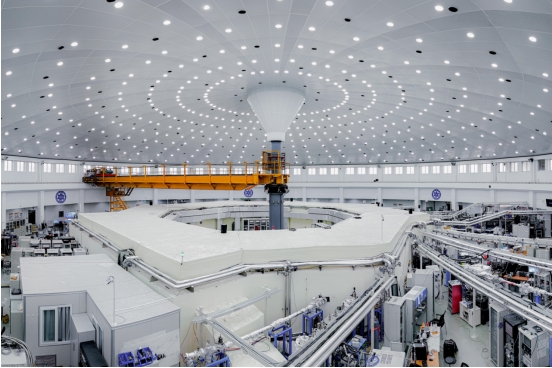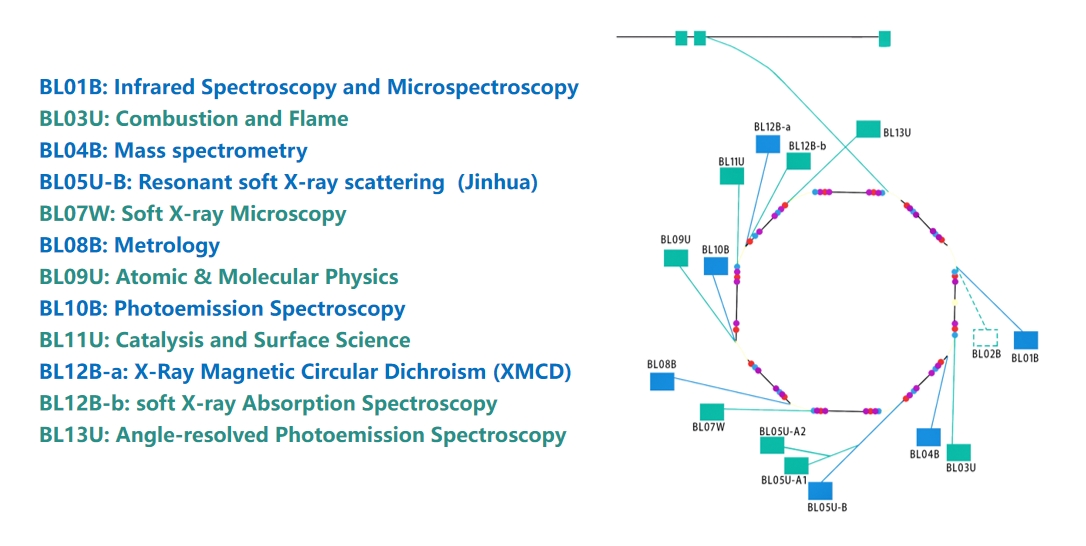Synchrotron radiation is an exceptional light source characterized by its high intensity, brilliance, continuous spectrum, strong directionality, tunable polarization, pulsed time structure, and clean ultra-high vacuum environment. It is widely used in basic and applied research fields such as physics, chemistry, materials science, life science, information science, mechanics, earth science, medicine, pharmacology, agriculture, environmental protection, metrology, lithography, and ultra-fine processing.
The Hefei Light Source (HLS), which achieved first light in April 1989, is a dedicated synchrotron radiation facility operating in the vacuum ultraviolet and soft X-ray regions.
Its first-phase construction began on November 20, 1984. The facility saw first light in 1989 and passed the national acceptance inspection in December 1991, with a total investment of 80.4 million RMB. In 1999, the state invested 118 million RMB in the second-phase project of the National Synchrotron Radiation Laboratory (NSRL), which was completed and accepted in December 2004. Over more than 20 years of user operation, HLS has adhered to the principles of stable performance and high-quality open access, providing an excellent experimental platform for many research fields, and has facilitated a series of significant research outcomes.
In order to provide users with better experimental conditions, HLS underwent a major upgrade from 2010 to 2014 with joint support from the Chinese Academy of Sciences and the University of Science and Technology of China. Following the successful upgrade, the beam emittance of the storage ring was significantly reduced, and the light source stability was markedly improved, reaching performance levels close to those of third-generation synchrotron radiation sources.

The Hefei Light Source currently owns 10 beamlines and experimental stations. These include 5 insertion device beamlines—namely, the Combustion, Soft X-ray Imaging, Catalysis and Surface Science, Angle-Resolved Photoemission Spectroscopy (ARPES), and Atomic and Molecular Physics beamlines and stations.
Additionally, there are 5 bending magnet beamlines, which include Infrared Spectroscopy and Microscopic Imaging, Mass Spectrometry, Metrology, Photoelectron Spectroscopy, Soft X-ray Magnetic Circular Dichroism, and Soft X-ray In-situ Spectroscopy beamlines and stations.
The overall layout of the beamlines is as follows:


